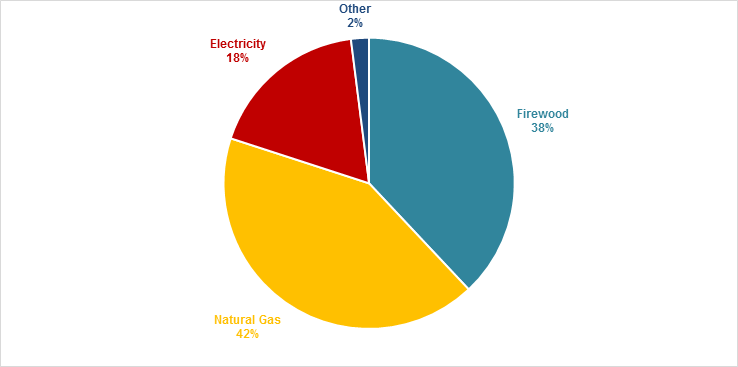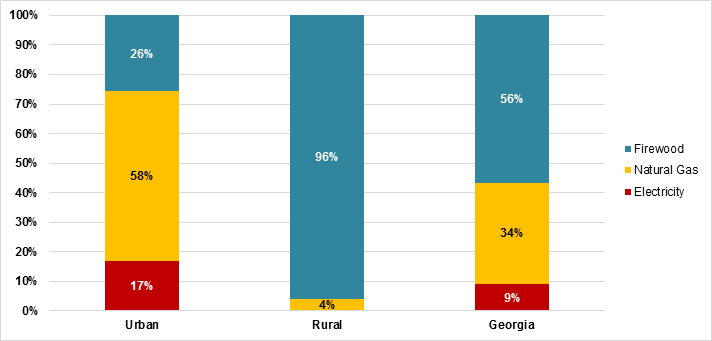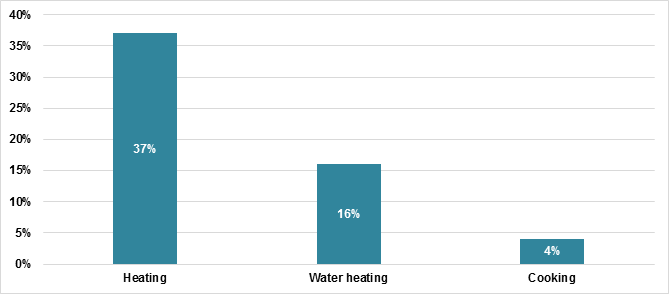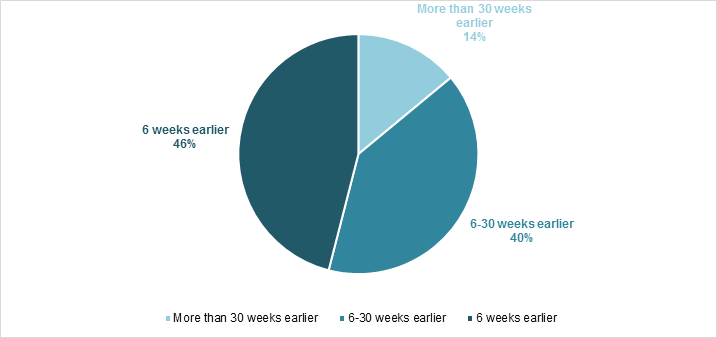 31
May
2023
31
May
2023
ISET Economist Blog
 Friday,
17
March,
2017
Friday,
17
March,
2017

 Friday,
17
March,
2017
Friday,
17
March,
2017
Despite the fast pace of installing gas infrastructure throughout the country, wood remains a major household fuel in Georgia. According to Georgia’s energy balance1, in 2014, Georgian households consumed 19,131 Terajoules2 of biofuel and waste (mainly wood). The share of wood in total energy consumed by households was 38%.
Chart 1. Wood satisfies almost 40% of households’ demand on energy in Georgia

According to the National Statistics Office of Georgia, in 2014, the total volume of logging in was 670,241 cubic meters of wood/timber. In addition, 45,443 cubic meters of wood were cut. These estimates are far lower than the data received from the survey carried out by the Association of Young Professionals in Energy of Georgia (AYPEG)3 (2014). Their survey results revealed that in 2014, the population of Georgia consumed 4.6 million cubic meters of wood for household purposes. The large gap between wood supply (official data on logged wood) and wood demand (energy balance of Geostat, results of the household survey) clearly indicate that illegal logging exceeds the official estimates by a factor of ten.
According to the survey carried out by AYPEG, the population uses wood mainly for heating purposes. Wood consumption is especially high in largely rural areas, where 96% of the population consumes wood for heating purposes.
Figure 2. Wood is still - by far - the most used heating source in villages

Despite the fact that alternative energy sources are available in certain rural areas (natural gas4, electricity), the majority of the population prefers wood.
Figure 3. Wood consumption for various household purposes

It can be assumed that the major reason why wood remains the main fuel in rural areas is not because of limited access to alternative energy sources, but rather, the low price of wood5. In urban areas, where wood production is costlier and access to wood is relatively limited (especially in the capital), natural gas is the major source for heating.
The results of the survey carried out by the AYPEG also indicate that burning wood is not efficient. It is established that burning wood releases less energy if the moisture level of the wood is high and therefore, more wood needs to be consumed to receive sufficient energy. According to the survey results, the population mainly consumes newly cut wood, and the average moisture level of such wood is 53%6.
Figure 4. Age of Wood Consumed by Households in Georgia

(This 2014 chart shows the population sector that consumed wood before the period necessary to pass from cutting to burning)
As a result, Galdava, I. et al (2014) estimate that in 2014, Georgian households consumed 4.6 million cubic meters of wood, and with this satisfied the demand on 16,969 Terajoules of energy7.
Wood consumption could be much lower if the consumption conditions were improved (storing wood in dry places, replacing existing stoves with effective stoves, etc.). Currently, however, Georgia has no reasonable plan for reducing the internal demand for wood by promoting efficient consumption of wood and replacing wood with alternative fuels. One resulting problem is that a large gap between the annual production of wood and wood demand will, other things being equal, result in the progressive reduction of Georgian forests, an issue that is becoming increasingly challenging to address, and will have profound implications on the long-term development perspectives of the country.
1 See details on www.geostat.ge
2 A Terajoule is a measure of energy and amounts to 1012 Joules or about 0.278 GWh.
3 This study was carried out in 2014 by the researchers of the Association of Georgia’s Young Energy Specialists, with financial support from USAID.
4 According to the 2015 report of Georgia’s Energy and Water Supply National Commission, 80% of households have access to natural gas and 100% - to electricity.
5 In villages, the population consumes trees cut in their gardens and waste (brought by the rivers) in addition to the purchased wood.
6 Sumbadze N., Pirveli I., Galdava I., Gachechiladze Z., Favlenishvili l., Galdava G., The Policy of Promoting Sustainable Energy Consumption among Georgia’s Households.
7 10% deviation from Georgia’s Energy Balance in 2014 could be caused by the differences in methodology. Also, the research of the association does not consider any biofuel other than wood.





